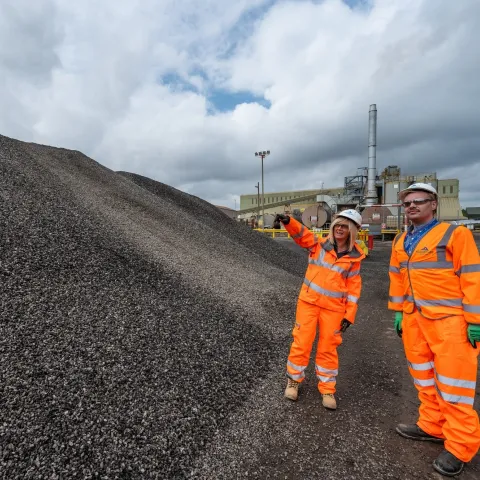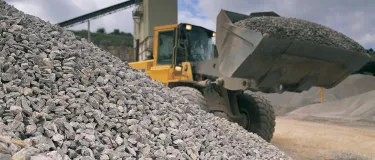An Essential Guide To Construction Aggregates

Aggregate, is a broad word that describes a “granular material used in construction” (granular meaning particles that do not stick together).
Typically, aggregate material is extracted from quarry sites using heavy machinery, and crushed to produce varying sizes. This can be filtered out by size to be used in various applications that we use every day, from the houses we live in, to the roads we drive on.
What are construction aggregates?
Construction aggregates are simply those hard, granular materials, used specifically within the construction sector. They are the fundamental elements that help build our cities, roads and homes, and form the basis of a number of other construction materials – which could not be made without aggregates.
What are they used for?
The variation of aggregates both in material, source and size, allows for a range of applications. Including:
- Asphalt for road construction
- Concrete
- Precast concrete including paving, bricks and blocks
- Drainage systems
- Cement
- Sub-bases
Outside of construction, aggregates can also be used to produce items such as:
- Glass
- Water filtration
- Ceramics
- Pharmaceuticals
- Foundries
How are construction aggregates produced?
The Earth formed approximately 4.6 billion years ago. The surface was very hot and when it eventually cooled, the earth’s crust formed. The process of erosion, weathering, chemical and biological action has been happening over the history of the Earth resulting in the formation of rock.

The most common sources of aggregates in the UK are limestone, sandstone and igneous rock. Construction aggregates are then generated through processing these rocks - using extraction, crushing and screening methods - to produce the sizes required.
Extraction – aggregates are first extracted from a quarry using an excavator. Sometimes aggregates can also be extracted from building sites, such as demolished buildings for recycled aggregates.
Crushing – once excavated, the rocks are much larger than the final aggregate needed for construction projects. Aggregate crushing is the process of breaking down the large pieces into smaller particles.
Screening – different sized aggregates are required for different types of construction projects and materials – thus they need separating. Construction aggregates can also be produced from naturally occurring deposits such as sand and gravel.
the different types of aggregate materials
There are four types of aggregates within construction. These are:

Natural aggregate
Natural aggregates, or primary aggregates, are virgin materials that are typically sourced from a quarry or dredged from marine locations. The material has not been subject to anything other than mechanical processing e.g. rock crushing.
This includes crushed rock, sand and gravel.
Secondary aggregate
Secondary aggregates, like Aggneo, are usually by-products of other industrial processes that have not previously been used in construction. This includes both manufactured slag (blast furnace, steel) and naturally occurring aggregates (china clay), depending on their source. China Clay is a virgin aggregate, the surrounding rock (such as a granite deposit) that is excavated to acquire the desired material (china clay) is the secondary aggregate.
Recycled aggregate
Recycled aggregates come from reprocessing inorganic or mineral material that have previously been used in construction. Examples of recycled aggregate include:
- construction demolition waste (CDW)
- reclaimed asphalt (otherwise known as RAP)
- crushed glass
- spent railway ballast.
What are recycled aggregates?
In our growing need for sustainable construction, the demand for a circular economy rather than extracting virgin material, is increasing. The use of recycled aggregates provides an opportunity for the construction industry to build sustainably. This could be secondary aggregates through non-industrial processes, or recycled aggregates through construction specific processes.
Circular economy starts by reducing waste. Using a linear approach, circularity can be increased through three principles Reduce, Reuse and Recycle. Within the construction industry, we can learn to build more with less through these principles. Secondary and recycled aggregates offer benefits by providing a Reuse and Recycle option. Giving aggregates a new lease of life once their original purpose has been fulfilled.
Conclusion
In conclusion, construction aggregates come in varying sizes and types, ideal for a wide variety of materials, applications and projects.
The versatility offered by aggregates allows us to design and build roads, public spaces, domestic premises, and buildings that last for generations. Their strength and durability provide opportunities unlike any other widely available resource.
Progression in the production of aggregates has also enabled us to be more sustainable, ensuring full circularity in the construction process. We can do this by creating aggregates from reclaimed asphalt or construction demolition waste, which is reprocessed to create new aggregates for the supply chain.






